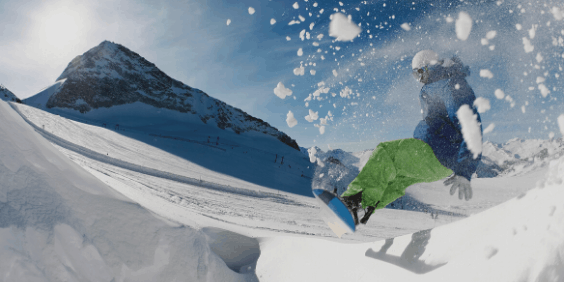Every Avalanche You Report Can Be Used Against You

Authors: Ryan Morasiewicz, Negina Khalil
A recent case in Colorado raises concerns for recreationalists that user-submitted avalanche incident reporting information may be used against them in criminal proceedings and legal proceedings.
Background on Avalanche Forecasting
In Canada, professional avalanche forecasting largely relies on the exchange of field observations and snowpack data.
The InfoEx, a co-operative subscription service managed by the Canadian Avalanche Association, provides a daily exchange of technical snow, weather and avalanche information from avalanche professionals for commercial businesses (such as ski hills, mechanized and non-mechanized wilderness guiding operations and government entities). As a subscription service, only those entities who subscribe to the list receive access to the information. Additionally, Avalanche Canada’s Mountain Information Network (MIN) is a central repository where backcountry recreationalists (and professionals) can self-submit their snowpack and avalanche observations. As soon as a report is submitted to the MIN, the information is available publicly.
Professional avalanche forecasters use observations from these two databases (along with their own field observations and many other sources of information) to produce public avalanche forecasts. These forecasts in turn are used by everyone from private industry to governments to recreationalists as a key element in winter outdoors safety and planning.
A recent situation out of the United States has raised a potential downside to sharing such information and has the potential to reduce the number of submitted observations, thus compromising the quality of avalanche forecasting.
The Reported Incident in White River National Forest
In March 2020, Colorado residents Evan Hannibal and Tyler DeWitt were snowboarding with a friend in the White River National Forest above the Eisenhower Tunnel. When the pair reached the area they wanted to ride, DeWitt tried to force the release part of the snow pack – a small wind slab of snow on the surface – that had the potential to avalanche. This is a standard backcountry safety technique that is intended to manage the snowpack and make an area safer to ride. His ski cut off the small slab, which in turn caused an unintended much larger avalanche. The pair were not caught in this slide, and after watching the avalanche occur, they made their way down to the bottom of the slope and called the incident into the authorities.
A special operations technician with the Summit County Sheriff’s Office responded, and observed avalanche debris covering a 400 feet-long stretch of road up to 20 feet deep. Thankfully, no vehicles were on the road and no one was injured by the slide. The avalanche did, however, destroy the Department of Transportation’s remote O’Bellx avalanche control system located on the slope.
Hannibal subsequently submitted his GoPro footage of the avalanche to the Colorado Avalanche Information Center (CAIC), the Colorado equivalent to Avalanche Canada. The professionals at CAIC used the video (among other information) to create a report that detailed the specifics of the avalanche. That report – like the many that preceded it – was designed to help the public learn from previous avalanche incidents and gain insights on how to avoid such events in the future. Reports for such “near-miss” incidents – that describe an actual avalanche consequence and not just snowpack or weather observations – are a particularly valuable resource.
A few weeks after the incident, the Sheriff’s Office technician contacted the Colorado Avalanche Information Centre and received a copy of their report, along with Hannibal’s GoPro footage. After reviewing the footage, the technician noted as follows:
“Throughout the video there are several comments made about areas of concern… The pair were clearly worried about avalanche conditions but proceeded down the path anyway. After the avalanche was triggered there was a comment made about how he hoped there was no one on the road. There was also a comment made about being in trouble if the cops show up.”
The technician subsequently issued a court summons to both of the snowboarders for reckless endangerment. In receiving this citation, the pair face possible jail time and can also be ordered to pay restitution for the destruction of the O’Bellx device, worth about $120,000 plus installation.
Hannibal noted that if the area he was snowboarding in was clearly marked with no trespassing signs, or if there were indicators that expensive equipment was being used in that area of the forest, he would not have ridden there.
Implications for Future User-Submitted Avalanche Incidents
It appears that this is the first time that user-submitted statements and video from a backcountry recreationalist have been used as the basis for criminal charges and possible restitution orders.
This has led to concern in the outdoor community about a possible chilling effect on future professional and recreational user-submitted incident observations. Also of concern is the resulting impact on the quality and accuracy of avalanche forecasts should these valuable observations dry up out of concern that a poster’s own experiences could later be used against them.
If recreationalists believe that their public MIN observations and experiences (especially of an actual avalanche event) could potentially form the basis of criminal or administrative action, will they keep to themselves? If avalanche professionals believe that their InfoEx reports can potentially be used against them by the authorities, will they be less likely to share their data?
Unfortunately, there are no legislative protections that restrict the use of such public MIN postings, nor are there any that would prevent the police from seeking and obtaining non-public user-submitted InfoEx information. With ever increasing numbers of backcountry recreationalists (both generally and with COVID-19) it unfortunately seems inevitable that there will be more and more avalanche events, making accurate forecasting even more vital. Only time will tell whether the Eisenhower Tunnel situation was an unfortunate one-off or the start of a more concerning trend with potentially serious consequences for outdoor winter safety.
Note: This article is of a general nature only and is not exhaustive of all possible legal rights or remedies. In addition, laws may change over time and should be interpreted only in the context of particular circumstances such that these materials are not intended to be relief upon or taken as legal advice of opinion. Readers should consult a legal professional for specific advice in any particular situation.


